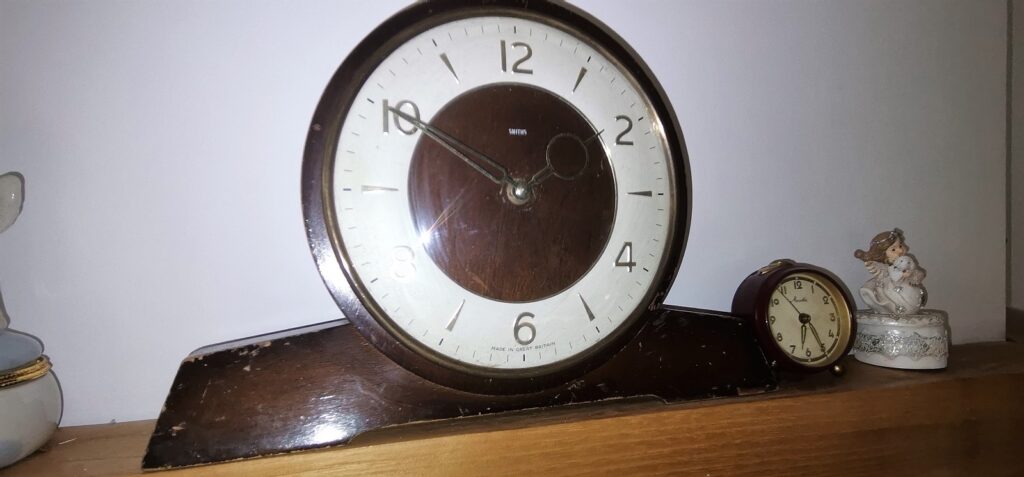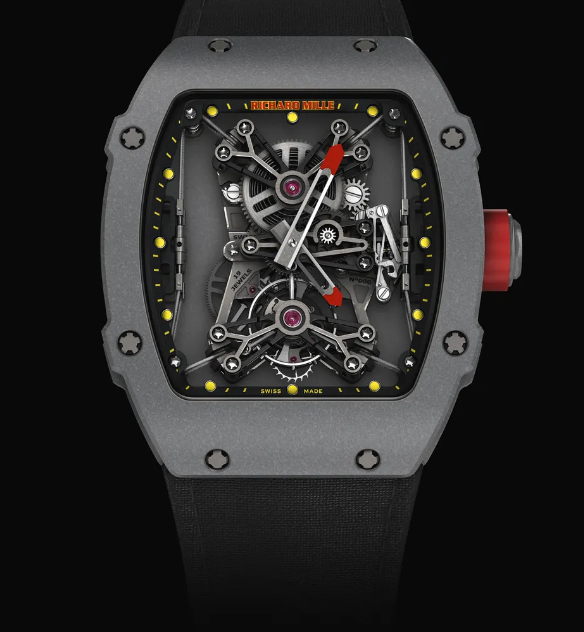Please note that this brief history focuses on the Smiths as house watchmakers. The parent society had enormous ramifications (summarized to some extent in the origins chapter), but this history is concerned only with watches.
In 1931 Smith, then called S Smith and Sons (Car Accessories) Ltd., decided to enter the domestic and watch market by forming a new company, Smiths English Clocks Ltd. and the Watch division S Smith & Sons (Motor Accessories) Ltd .with Cricklewood as the main factory.
The Smiths were one of the first companies to produce synchronous electric clocks. These were put on the market towards the end of 1931. It appears that Smiths formed a subsidiary called “Synchronous Electric Clocks Ltd.” to produce synthetic watches and the first models are so marked.
In 1932 Smiths acquired a company called “English Clock and Watch Manufacturers Ltd” in Coventry and thus acquired the famous trade names Astral and Empire, which they later used widely.
The Smiths were one of the first companies to produce a synchronous alarm clock, featured in advertisements, in 1934, which they called the “Callboy”.
In 1934, Smith bought the Enfield Clock Company. The Smith’s 8 day calotte clock Smith made its debut at the British Industries Fair in 1934. Before this date they were exclusively foreign made.
So in 1934, Smiths introduced the “Batriclock”, which was intended for areas where a synchronous clock could not be used.
This was followed in 1935 by the “Synfinity” which was described as “the clock that never stops”. They said it was “remarkable the combination of a synchronous electric movement with the essentials of a fine precision escapement lever”. If the electricity supply is interrupted, the clock works for up to six hours when it is re-energized. It seems that the synchronous motor thus corrected the mechanical time train at time intervals.
So, around 1935, Smith produced a chiming synchronous electric clock.
Since 1937 the trade name “Sectric” appears on Smiths electric watches. (Ads in HJ used the phrase “Smiths Electric Synchronous Clocks” until Jan37 and “Smiths Sectric” from April 37. At that time Smiths used a cartoon character face type of clock in their ads and both changed the name ).
During the war (1939-1945) Smiths production expanded. There has been a demand for engines, aircraft and marine instruments for the services and production of industrial instruments, imported so far since it began.
In 1944 a major regrouping of the entire Smiths organization was carried out.
Main company name changed to S Smith & Sons (England) Ltd with four divisions:
Smiths Engine Accessories Ltd.
Smiths Industrial Instruments Ltd,
Smiths Aircraft Instruments Ltd and
Smiths English Watches Ltd
After the regrouping the watch division of the company, “Smiths English Watches Ltd.”, consisted of the following main companies:
A. B. E. Co Ltd
Enfield Clock Co (London) Ltd.
English Clock Systems Ltd.
British Precision Springs Ltd.
J. E. V. Winterbourne Ltd.
Pullars Instruments Ltd.
Great Britain Watch Co Ltd
Clock Components Ltd.
Anglo-Celtic Watch Co Ltd. (Associated).
At the end of the war in 1945 the factory returned to Cricklewood clock production with new models of synchronous clocks and a factory at Carfin (near Glasgow) producing alarm clocks selling for less than a pound.

Enfield were taken over in 1934 and was allowed to continue production in its own name, but in 1949 the production of Enfield “hits”, which moved from the Enfield factory in Edmonton to the Smiths factory at Ystradgynlais in Wales. “Bells” production that took place a year or later, and Enfield ceased to be entities, becoming only part of the Smiths group, with the only distinguishing feature being that the move ment from the Ystradgynlais factory were marked “Smiths Enfield “.
A new factory for the manufacture of alarm clocks, which had opened in Wishaw in 1951 as Carfin, became unfit.
In 1956 Smith offered watches with the new “floating balance” movement invented by Hettich in Germany and licensed to Smiths. In 1960 they offered a smaller version of their own design, which was widely used as a regulation that was easy and precise. The floating balance had advantages over older escapements, it is robust and less sensitive to disturbances, as for example when dust, or being out of level.
In 1970 they introduced a series of watches using the Tensator movement where a special spring provides constant torque and potentially better timing.
Historical note: In 1953 Leon Hatot of Paris patented the use of the transistor in a pendulum. The patents covered both controlled balance movements. The system that licensed to other factors of and in Europe the most development used the principle of a controlled movement balance with stator and moving magnet. The alternative, a fixed-magnet moving coil, was rejected by the rally as too complex.
In 1958 and 1959 Smiths patented the movement of coil watches Includes transistor, but did not put any model on the market until 1962 when they announced “Sectronic” Which had a coil movement in motion. This movement had three spirals, which served to carry current to the coils.
Over the next few years they re-designed the movement and introduced the Sectronic II mark in 1969. Both the I and II marks were complex and difficult to manufacture. One report indicates the production of synthesis movements ceased in the 1970th
In 1972 They announced a battery clock with a much simpler moving magnet and stator design (as used in Europe). This may be the mark of 4, all of which is fully described in the 1973 catalog. I also have a prospectus, issued after the change of company name in 1977. Describing it as “Jewelled Electronic Battery Movement”, which appears similar to mark 4, but has a different circuit board arrangement.
In May 1971 Smiths launched the Tuning Battery Clock.
The moves were, in fact, made through Jeco in Tokyo, who licensed the Smiths as sole agents in the UK. I understand Jeco made them themselves under license from Horstmann Clifford Magnetics of Bath in the UK.
The first tuning forks produced had a sticker with the name Smiths JECO, but later movements had “Division of Smiths Industries Limited. Clock & Watch” molded into the movement cover ment.
Historical Note: Controlled quartz watches were produced in Germany in 1971 by Staiger and Junghans. Smiths announced their own quartz movement design in mid-1975 with production reaching 12,500 units per week in June 1977.
The latter half of the 1970s saw the decline of watchmaking by all European and British companies as they were unable to compete with the lower cost products offered by Far Eastern manufacturers.
Smiths stopped producing watches for the domestic market in 1979th
In 1966 the name of the parent company of the Smiths group was changed from ‘S Smith & Sons (England) Ltd’ to ‘Smiths Industries’
In 1977 Smith reorganized the watch company and split, forming two separate companies, Smiths Industries Co. Clock and Smiths Industries Co.
COPYRIGHT Barrie Smith 2005
Never miss a story that matters. Subscribe to our newsletters!









